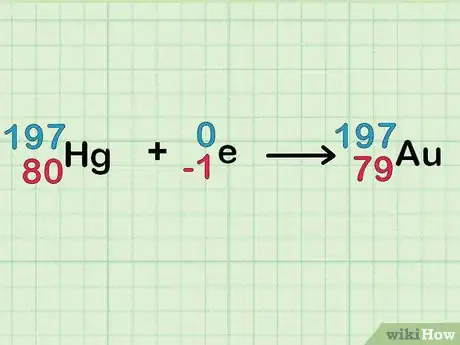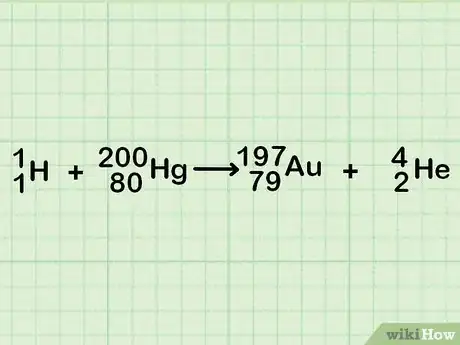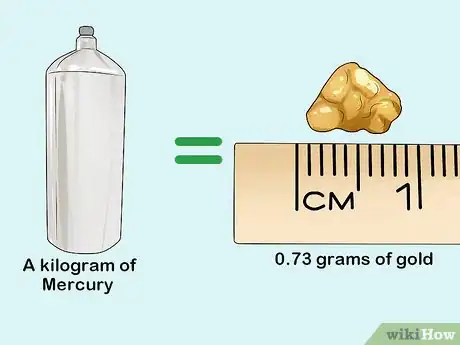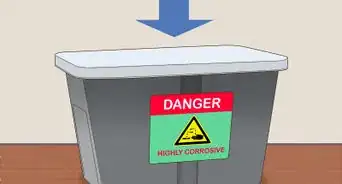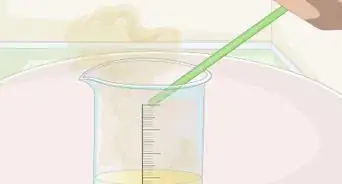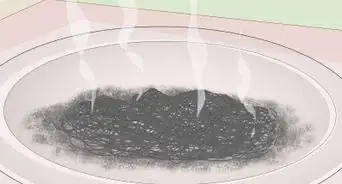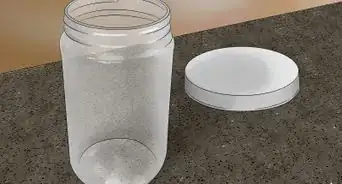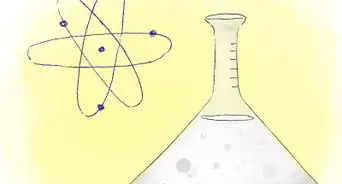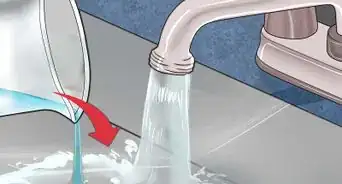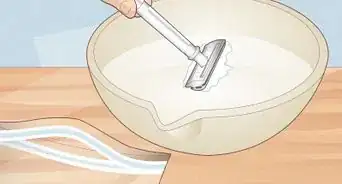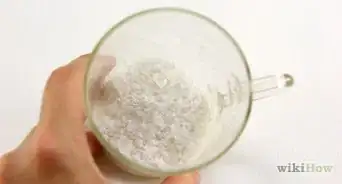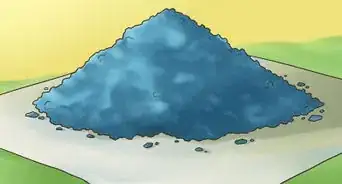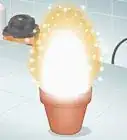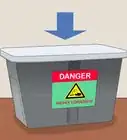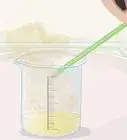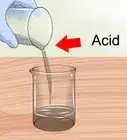X
wikiHow is a “wiki,” similar to Wikipedia, which means that many of our articles are co-written by multiple authors. To create this article, volunteer authors worked to edit and improve it over time.
This article has been viewed 97,606 times.
Learn more...
For many years, alchemists searched for a method to produce gold. Recently, with the advent of nuclear technology, this process has actually become possible. Mercury is relatively easy to turn into gold, so it will be used as the starting material. This method is not a terribly practical or economically viable way to go about making gold, but if you're interested in how it works, you can learn the science behind the process.
Steps
-
1Gather the equipment. To turn mercury into gold, you will need the following:
- Mercury (duh....). Get as much as you can, because it's not very efficient.
- A neutron source. Ideally you need a particle accelerator (or a nuclear reactor).
- A neutron moderator. Water (yes, the stuff out of a tap) works pretty well.
- Neutron shielding, reflecting and collimating equipment
- Nitric acid
-
2Configure the equipment. The neutrons from the source need to pass through the collimator (a thing that makes them go in straight lines) and the moderator (something that slows them down so that they react better) and finally into the mercury. Set up the neutron reflectors around the mercury (so that any escaping neutrons are reflected back) and then surround the whole thing with shielding.Advertisement
-
3Fire up the accelerator. Ideally, you want to hit the mercury with a short, very intense burst of neutron radiation.
-
4Understand the science! Here's what's happening:
- Ordinary mercury contains seven isotopes: Hg-196, Hg-198, Hg-199, Hg-200, Hg-201, Hg-202 and Hg-204.
- When it absorbs a neutron, Hg-196 becomes Hg-197. Hg-197 decays into gold.
- As a by-product, Hg-202 and Hg-204 become Hg-203 and Hg-205, which decay into thallium.
- Other isotopes change into each other and remain mercury.
Advertisement
-
1Wait. After the neutron burst, the reaction that produces gold has a half-life of 64.14 hours. If you wait this long, half of the Hg-197 will have become gold.
- Proton plus Hg-200 is one unfavorable (due to high positive nuclei charge and repulsion charge), yet with a possible alternate pathway.
-
2Treat the mixture with nitric acid. After the reaction, the mixture should largely contain mercury, with some thallium isotopes, and gold. Nitric acid will dissolve mercury and thallium, but not gold.
-
3Filter off the mercury and thallium nitrates. You should be left with gold.
- And now for the bad news: Though Hg-196, the isotope is readily converted to gold as Hg-196 readily absorbs neutrons, it only comprises 0.15% of natural mercury left. Assuming perfect conversion to Hg-197, then after one half-life (half of the Hg-197 decays), a kilogram of mercury will give you... 0.73 grams of gold. That's right, you get less than three-quarters of a gram of gold per kilo of mercury.
- To further increase gold yields and make better use of mercury, you can try to hit a isotope specific mix of Hg-198, Hg-199 (together 27% of all mercury) with high energy protons, kicking out neutrons. Yet this is an extremely inefficient process. Keep doing it until finally to converted to Hg-197, then wait just as above for decay to Au-197 or gold. Repeat nitrate steps
Advertisement
Community Q&A
-
QuestionYou folks have a wonderful sense of humor. Or, are you serious?
 TomPNTop AnswererThis is a serious method of making gold from mercury. However, as stated, it isn't economically viable. A similar process is used to make other artificial elements, such as plutonium, californium, ununoctium, etc.
TomPNTop AnswererThis is a serious method of making gold from mercury. However, as stated, it isn't economically viable. A similar process is used to make other artificial elements, such as plutonium, californium, ununoctium, etc. -
QuestionIsn't mercury poisonous?
 Community AnswerMercury is a very toxic or poisonous substance that people can be exposed to in several ways. If it is swallowed, like from a broken thermometer, it mostly passes through your body and very little is absorbed. If you touch it, a small amount may pass through your skin, but not usually enough to harm you.
Community AnswerMercury is a very toxic or poisonous substance that people can be exposed to in several ways. If it is swallowed, like from a broken thermometer, it mostly passes through your body and very little is absorbed. If you touch it, a small amount may pass through your skin, but not usually enough to harm you.
Advertisement
Warnings
- This method deals with sources of radiation. Check to make sure you're allowed to use them, and handle them at the largest reasonable distance. If at all possible, use a robot to manipulate them.⧼thumbs_response⧽
- This method can be used to make other materials, such as making technetium (a medical tracer) from molybdenum. Whatever you do, do not put uranium in the accelerator, as it will be converted to plutonium - which you really don't want lying around your place.⧼thumbs_response⧽
- This method is not economically viable. You have to pay for the mercury (expensive), the neutron source (very expensive), the particle accelerator (ridiculously expensive), electricity and coolant for the accelerator (also ridiculously expensive), and all of the shielding (expensive and vital, if you don't want to die). After all of this, it hardly seems worth it, doesn't it?⧼thumbs_response⧽
- Assume all chemicals are toxic, corrosive, and flammable.⧼thumbs_response⧽
Advertisement
About This Article
Advertisement



